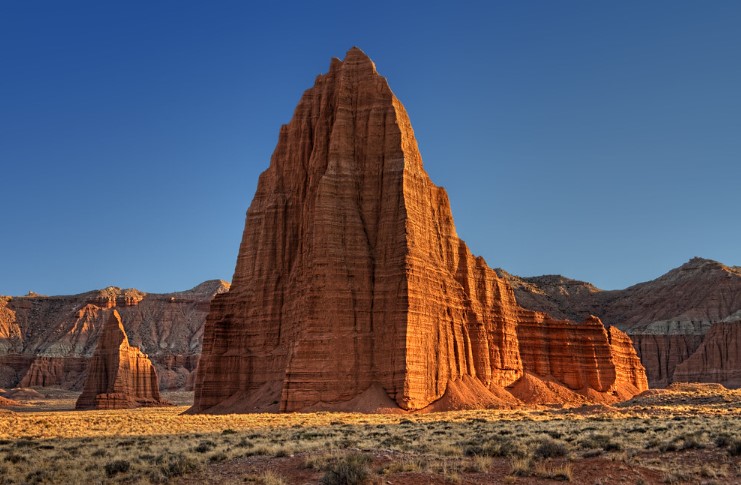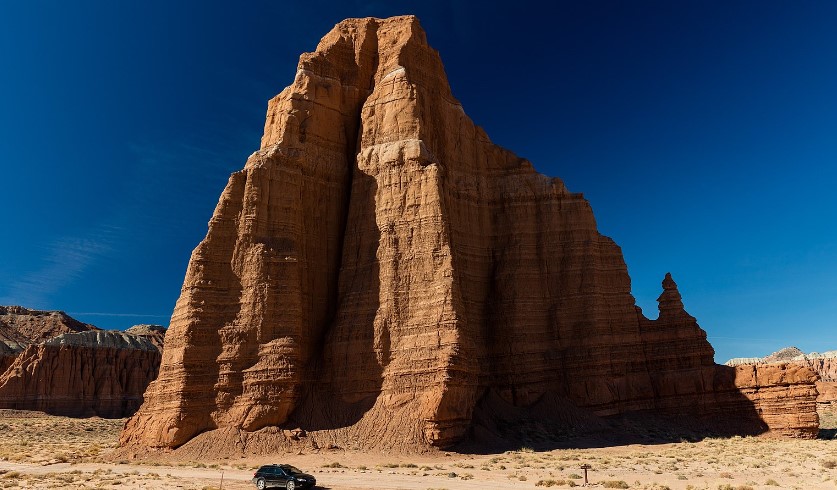The Temple of the Moon is a popular tourist destination in Moab, Utah. It is part of the Arches National Park, which is home to over 2,000 natural sandstone arches, including some of the most iconic and recognizable landmarks in the world. The Temple of the Moon is a massive rock formation that towers over the landscape and is easily recognizable by its unique shape and the large, crescent-shaped arch that gives it its name. The arch is approximately 100 feet tall and over 70 feet wide, and it is one of the largest arches in the park.
The Temple of the Moon is made up of solid, pink-buff-colored Entrada Sandstone. The sandstone was originally deposited on a tidal flat as sandy mud and is estimated to have formed approximately 160 million years ago, during the Jurassic period, as part of the largest sand sea in Earth’s history. The strata in Cathedral Valley have a slight incline of three to five degrees to the east and appear to be almost flat.
After the sedimentary rocks were laid down, the Colorado Plateau was lifted uniformly, preserving the horizontal orientation of the layers. However, Capitol Reef is an exception due to the Waterpocket Fold, a monocline that formed during the Laramide Orogeny between 50 and 70 million years ago, causing an exception to this uniformity.
Over time, weathering and erosion have shaped the rock into the unique formations that are seen today. The rock was created by a process called differential erosion, where some parts of the rock are more susceptible to erosion than others. This has created a large opening in the rock, which is the crescent-shaped arch that gives the Temple of the Moon its name.
Visit this magical rock can enjoy the breathtaking views of the surrounding landscape from several viewpoints. There is a hiking trail that leads up to the base of the arch, offering a close-up view of the massive structure and the intricate details of the rock formations. The trail is a moderate hike, but it is well worth the effort for the amazing views and the chance to get up close and personal with the natural wonders of Arches National Park.
The best time to visit the Temple of the Moon is during the spring and fall seasons. This is because the temple is located in a Cold semi-arid climate zone, as classified by the Köppen climate classification system, characterized by an average temperature below 32 °F (0 °C) in the coldest month, and a majority of the annual precipitation occurring in spring and summer. This desert climate experiences an annual rainfall of fewer than 10 inches (250 millimeters), with light snowfall in the winter.
It is one of the most popular destinations in the park, and it is easy to see why. The combination of its unique shape, size, and location makes it an unforgettable experience for visitors of all ages. Whether you are an experienced hiker or a first-time visitor to Arches National Park, the Temple of the Moon is definitely a must-see destination.
Related Reading – Temple of the Moon Machu Picchu – An Exploration of Hidden Gem










